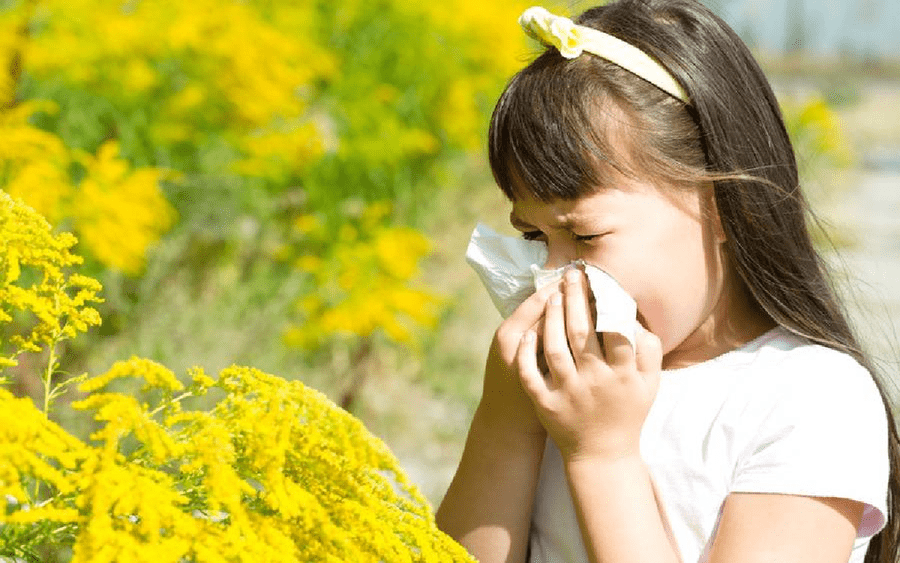Recognizing and Treating Allergies and Asthma in Kids
Allergies in children are common and can run in the family

Allergies in children are common and can run in the family
If your little one has a chronic runny nose, is sneezing repeatedly and has a lingering cough — a cold may not always be the cause. Your child may have allergies inherited from you or your spouse.
“There’s a huge genetic component for development of certain allergic diseases,” says John Kelso, MD, an allergist at Scripps Clinic Carmel Valley. “Asthma, rhinitis (hay fever), eczema and food allergies definitely run in families.”
While specific allergies are not inherited, a tendency toward having allergies is, says Dr. Kelso. If one of your parents has an allergy, there is a chance you may develop one too. If both parents have allergies, the chances are greater.
However, children may develop a different allergy than their parents. For instance, if a parent is allergic to peanuts, the child may be allergic to pollen. Some allergies, including drug and stinging insect allergies, are not inherited.
“I see a lot of families. In some cases, I treat three generations,” says Dr. Kelso.
Allergies are the most common health issues affecting children in the United States, according to the Asthma and Allergy Foundation of America (AAFA). Hay fever in kids is common. In 2015, 8.4 percent of children were diagnosed with hay fever.
Determining if your child has an allergy may take a little detective work, but careful monitoring should help you decide if you need to call the doctor. Your observations as a parent will help your doctor decide what allergens to test for.
Allergies
Pay close attention to allergy symptoms in children as they may masquerade as the common cold. A runny nose may indicate an allergy to dust mites or grass. Allergy symptoms for hay fever, or allergic rhinitis, include:
- Sneezing
- Itchy nose and/or throat
- Nasal congestion
- Clear, runny nose
- Itchy, watery eyes
You may not be able to cure your child’s rhinitis, but you can help your little one feel better. Treatments may include:
Antihistamines
Antihistamines reduce or block histamine, the chemical produced by the body after an allergic trigger. They come in different forms, including tablets, capsules and liquids. Ask your pediatrician or allergist which medicine is best for your child.
Corticosteroid nasal sprays
“These are very safe and effective,” says Dr. Kelso. “They work best when used every day and are safe for children as young as 2 years of age.” Your doctor can prescribe the appropriate spray for your situation.
Asthma in children
Asthma in children is more common than in adults. In 2017, 1 in 12 children had asthma, according to AAFA. It is the leading chronic disease in children and the top reason for missed school days.
A persistent cough at night or with exercise may be a sign of asthma. Typical symptoms of asthma in children include:
- Coughing
- Wheezing
- Shortness of breath
- Chest tightness
These symptoms are often brought on by asthma “triggers,” such as a cold, exercise or exposure to irritants or allergens in the air. Treatments may include:
Rescue inhaler
For asthma sufferers, rescue inhalers play an important role in management and treatment. If a sudden attack occurs, this short-acting inhaler quickly relaxes the tightened muscles around the airways and restores air flow to the lungs.
Controller medications
These medications are taken daily to prevent symptoms and include various inhalers and oral medications.
Food allergies in children
Children have food allergies more often than adults. In 2014, 5.4 percent of US children under age 18 had food allergies, according to AAFA.
Peanut is the most common allergen followed by milk and shellfish (lobster, shrimp and crab). The others are eggs, wheat, soy, tree nuts (walnuts, Brazil nuts and cashews) and fish (tuna, salmon and cod).
“Children often outgrow many food allergies by the age of 5, particularly eggs and milk, but peanut, tree nut, fish and shellfish allergies are usually lifelong,” Dr. Kelso says.
If you are concerned about preventing food allergies, Dr. Kelso says to introduce all foods to your child. While a decade ago parents were told to withhold potential allergens, that theory has been debunked. Indeed, some research shows that delaying these foods may increase the chance that your child will develop a food allergy.
Be on the lookout for any allergic reactions, which usually appear a few minutes to a couple of hours. Symptoms include:
- Flushed skin or rash
- Hives or welts
- Face, tongue or lip swelling
- Vomiting or diarrhea
- Coughing or wheezing
- Difficulty breathing
- Lightheadedness
If you see mild symptoms, avoid the food and contact an allergist for a diagnosis and further evaluation. Once your child’s specific allergies are identified, your physician will provide an action plan for managing the allergies (eliminating the food and being prepared to treat an accidental ingestion).
If your child is having trouble breathing, is wheezing, has swelling on the face or lips or develops faintness or severe vomiting or diarrhea after eating, call 911 as severe allergic reactions from food can be fatal.